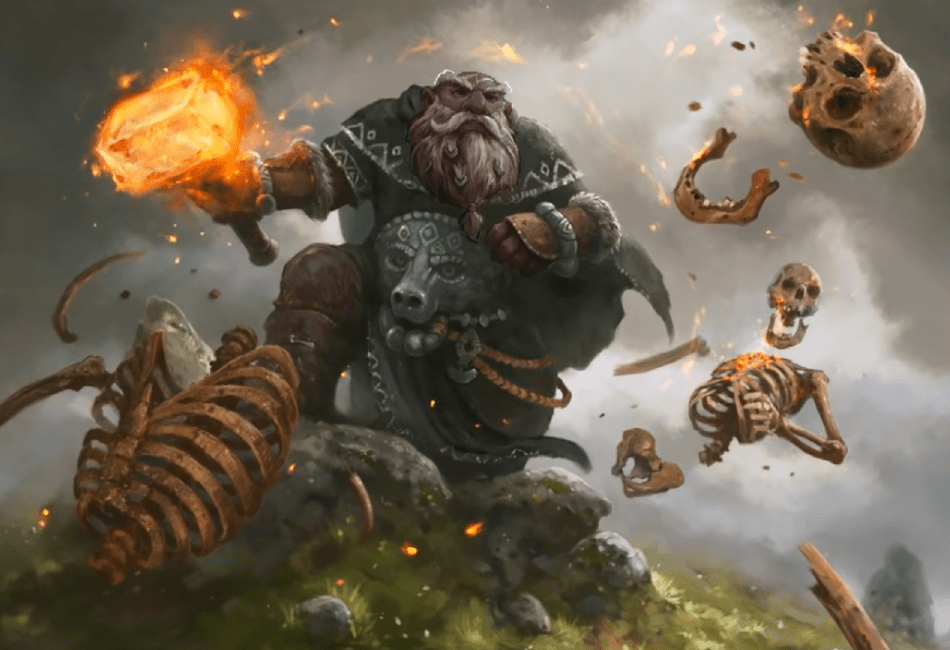These are not the comical dwarves of Snow White or the valiant Gimli from The Lord of the Rings. No. The duergar are evil dwarves from deep below the earth’s surface.
Bottomline on Duergar in 5e
Duergar, also known as gray dwarves, can be used as monsters, player characters, and NPCs. They are known for being evil and not much fun, but have a reputation for being some of the finest craftsmen in the Underdark.
Duergar tend to have good Strength and Constitution scores, but not great Charisma. They also have innate magic as well: Enlarge and Invisibility.
Duergar society tends to gravitate towards lawful evil. They have a dark history with mind-flayers, other dwarves, and practically everyone else they’ve been in contact with. Let’s kick off our Duergar 5e Guide by seeing what a Duergar is.
What is a Duergar in 5e?
Duergar were mentioned in the Player’s Handbook as a subrace of dwarves but their stats were not included. Their player character stats are included in the Sword Coast Adventurer’s Guide (SCAG), however.
The duergar are more developed in the Forgotten Realms (Faerun) setting than any other. There, Dungeons & Dragons lore concerning the duergar is supported by recognized novelists like R.A. Salvatore.
In the Underdark of Faerun the duergar have a city, Gracklstugh, the City of Blades. It is 100 miles from the Drow city of Menzoberranzan. Like the drow, duergar tend to be evil.
Their males at least, tend to be bald on top with beards. While no less strong, they tend to be thinner than other dwarves and have grey skin and white hair. It is because of their appearance that they are also called “gray dwarves”.
Duergar as Monsters
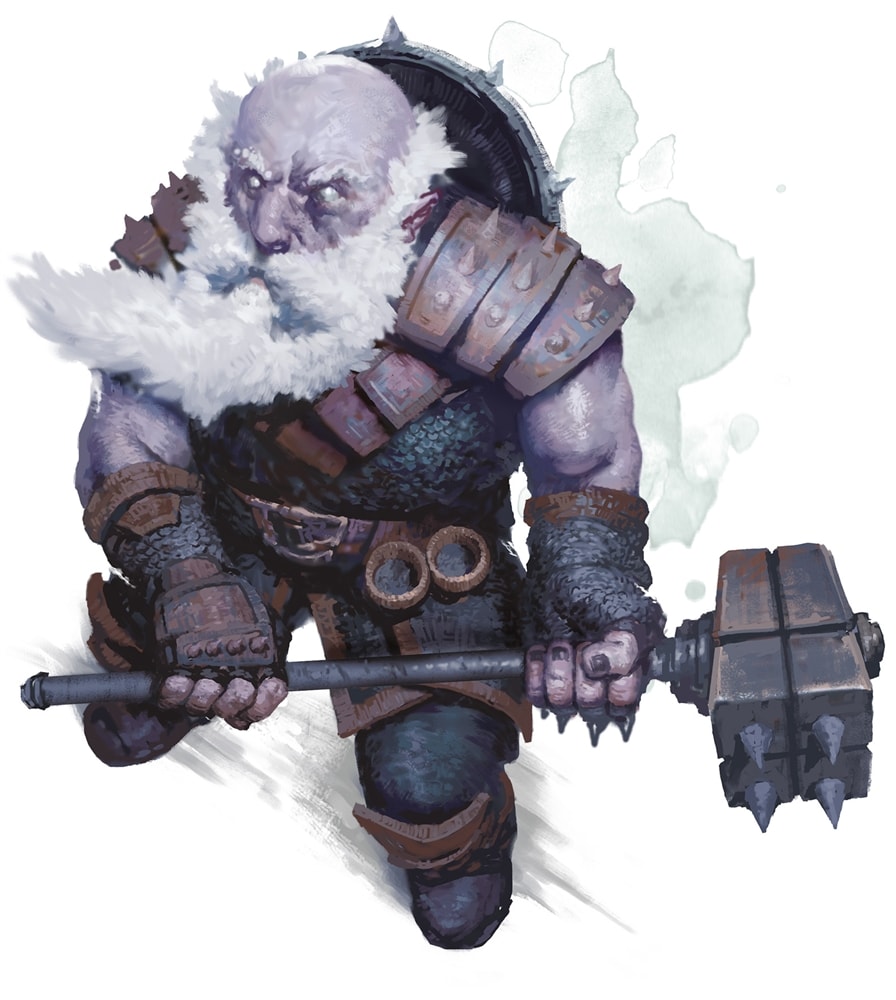
Dragons aren’t the only monsters in Dungeons & Dragons. Monsters are an essential part of the game as challenges for players to overcome and Duergar fit the bill. They are tough, bad, magic-wielding, and magic-resistant. And yet, there’s something deeper.
Dungeons in D&D are very rarely prisons, but they usually at some point lead underground. Why? Why do the heroes have to go underground? Why is it always some place underground where the heroes must go to kill the monster, take the treasure, and eventually return to the civilized world?
It is beyond the scope of this article to fully explore the underworld and what it represents, or what it means to be a hero capable of exploring such a place and engaging the monsters therein.
What I can say is that the duergar, as denizens of the Underdark, are part of a deep dungeon. They represent an evil society, miles below the earth’s surface, that hold horrifying secrets buried under millennia of pain and loss.
Should your DM wish your party to encounter these gray dwarves, here are their stats:
Duergar:
- Size: medium
- Alignment: lawful evil
- Armor Class 16: (scale mail, shield)
- Hit Points: 26 (4d8+4)
- Speed: 25 ft.
- Damage Resistance: poison
- Senses: Darkvision 120 ft., Passive Perception 10
- Languages: Dwarvish, Undercommon
- Challenge: 1 (200 XP)
- Duergar Resilience: advantage on saving throws vs. poison, spells, and illusions plus resistance to being charmed or paralyzed
- Sunlight Sensitivity: While in sunlight, duergar have disadvantage on attack rolls and any Wisdom (Perception) checks that rely on sight.
- Innate Magic: Enlarge and Invisibility
- War Pick: Melee: +4 to hit, Dam. (1d8 +2), 2x when enlarged
- Javelin: Ranged: +4 to hit, range 30/120 ft., Dam. (1d6 +2) 2x when enlarged
| STR | DEX | CON | INT | WIS | CHA |
| 14 (+2) | 11 (+0) | 14 (+2) | 11 (+0) | 10 (+0) | 9 (-1) |
The Duergar and the Illithids
Illithids are the actual name of the mind-flayers, evil aliens with psionic powers and tentacles coming out of their faces. Like the Githyanki and the Githzerai, the Duergar are just one of the many D&D races that were once enslaved by the mind-flayers. Like the other slave races, even after their hard-won freedom, they were never quite the same.
If we’re talking about the Forgotten Realms/Faerun setting, the Duergar were once part of the Shanatar Empire of the Eight Dwarvish Clans. It was told that there had been disagreements among the clans and the Clan Duergar separated from the other clans but did not make war on them.
They went deep into the earth and mined for its riches. In fact, they went deeper than any dwarf had ever gone. Many Duergar died from over-work, but they continued to push deeper.
By the time Clan Duergar understood the true nature of their drive for the deep, it was too late. The Elder Brain of the mind-flayers had been using its psionic powers to put certain suggestions into the minds of the Duergar.
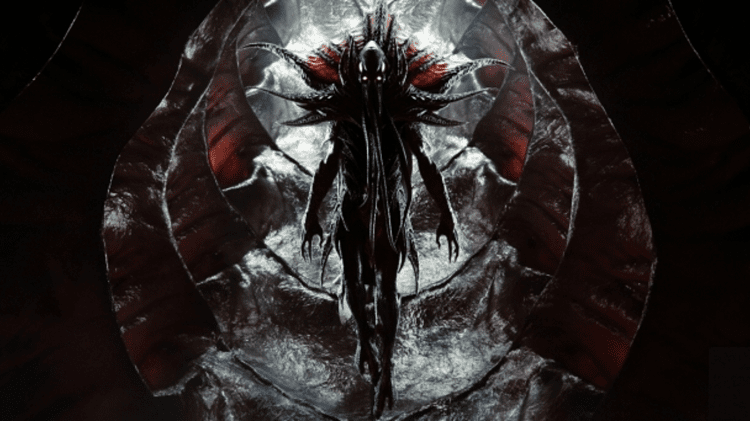
By the time they arrived at the mind-flayer city, it was too late to escape and their minds had already become the thralls of the mind-flayers.
Even when the other dwarvish clans knew of this, they chose not to help. The duergar became slaves for thousands of years and, gradually, their bodies and minds evolved to accommodate mind-flayer dominance. This effect can’t be over-estimated. The mind-flayers are arguably the most skilled masters of psionics in the D&D multiverse.
Had they been allowed to completely control the Astral Plane, they would have eventually controlled thought itself for all life forms on every plane of existence.
When the duergar eventually freed themselves of the mind-flayers, they tried to return to the surface. Unfortunately, the other dwarves saw the duergar as tainted and wanted nothing to do with them. The bitterness of rejection created a long and bloody war. Even to this day, there is hatred between duergar and the other dwarves.
The duergar opinion of the other dwarves is something like this:
Those heroic and virtuous dwarves had abandoned one of their clans to the unimaginable torture of the mind-flayers. Where was the courage then? Those heroic warriors sat and watched in silence for thousands of years while mind-flayers paraded one of their clans as slaves.
It wasn’t dwarven courage that won their freedom; it was duergar courage! Were they rewarded for their courage? Did the dwarves embrace their long-lost kin? No.
Those self-righteous dwarven hypocrites judged the duergar to be tainted by the mind-flayers. They didn’t want their pure society to be polluted by duergar blood. That pure society of useless cowards that pretend to be brave but went into hiding when the duergar needed them most!
They could have been our brothers, but they chose another path. Now they will be our slaves!
Duergar Society
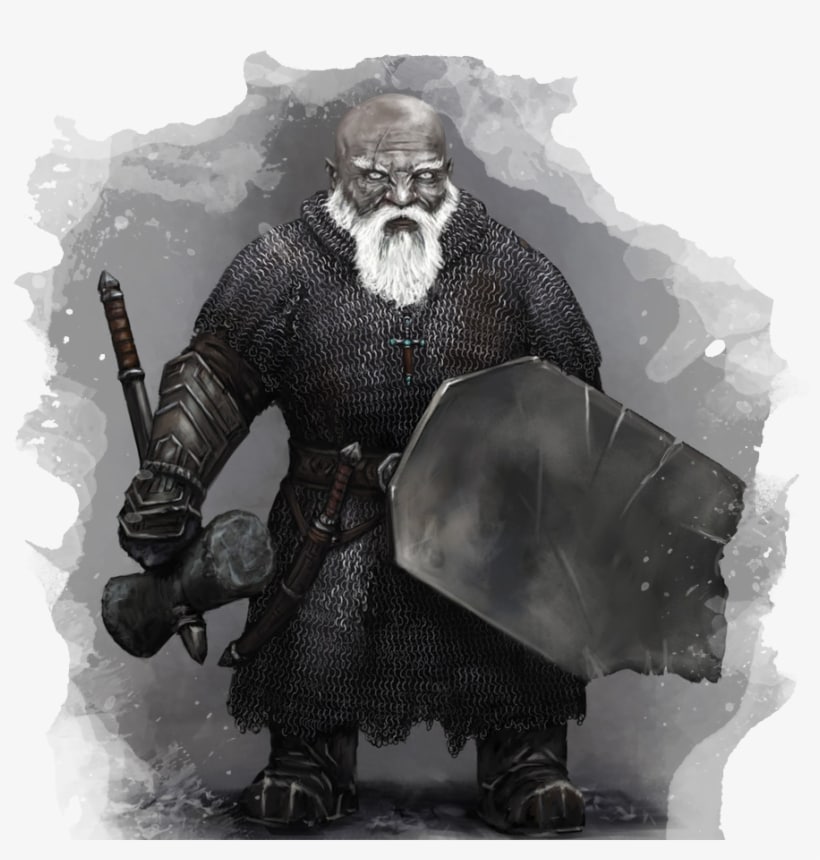
Duergar have permanent psychic damage. The creative part of their brains has been permanently altered by the mind flayers. Their cities are dull and dreary and they basically have no art. Regardless, they are master craftsmen and their utiliatrian items are of amazing quality.
Coins from The City of Blades have the face of their current ruler on one side, and a mind-flayer skull on the other. The inscribed motto reads: As low as we can go.
Their clerics go through painful rituals. Although the duergar have their own gods, Laduguer and Duerra, it is rumored that those gods had perished long ago. Whether knowingly or unknowingly, it is alleged that these clerics are secretly worshipping Asmodeus, Lord of the Nine Hells, instead.
Duergar as Player Characters
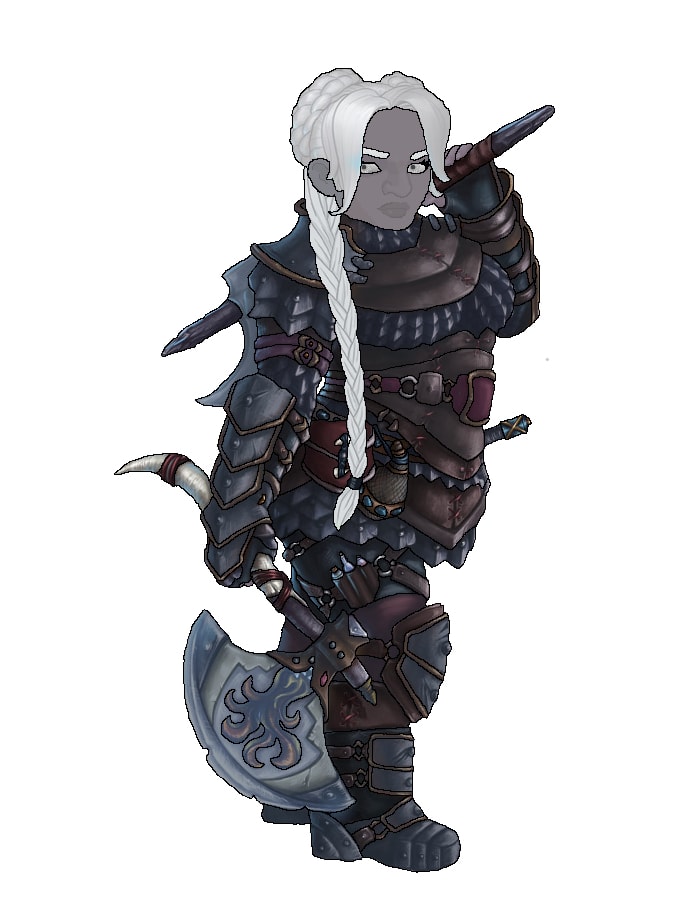
Duergar were mentioned in the Player’s Handbook but their stats were not given. Their stats as player characters were given in the Sword Coast Adventurer’s Guide.
Duergar society, even Duergar brain physiology, is all about conformity and just being dull. Therefore, they don’t join parties of adventurers too often. This leaves your player and DM with 2 options:
- You can have a duergar-centric campaign where every adventure is just another mission to promote the interests of the duergar empire.
- Your character can rebel against duergar society and be some type of outcast. That, of course, would require an interesting backstory.
Duergar Traits
| Duergar | +2 CON | +1 STR | 120 feet | Enlarge 3rd Lvl
Invisibility 5th Lvl |
Duergar actually possess most of the same traits as other dwarves. The ones that are particularly duergar, are underlined.
- ASI: +2 CON, +1 STR
- Age: 50-350 years
- Size: 4-5 ft 150 lbs.
- Speed: 25 ft/turn and no speed penalty for heavy armor
- Darkvision: 120 ft
Sunlight Sensitivity: disadvantage on attacks rolls and Perception checks when in sunlight
- Poison: Advantage on poison saving throws and resistance on poison damage
Duergar Resilience: advantage on saving throws against illusions and against being charmed or paralyzed
- Weapon Proficiency: battleaxe, handaxe, light hammer, warhammer
- Tool Proficiency: 1 artisan tool from- smith’s/brewer’s/mason’s
- Stonecunning: History check for stone, 2x, auto pro
- Languages: Undercommon, Common and Dwarvish
The way Darkvision worked in 1e, was that it was called infravision, heat sensing sight. In 5e, Darkvision is more all-encompassing.
If you are in complete darkness, you don’t see the way you normally would, but with Darkvision you can see in complete darkness the way you would be able to in dim light.
If you are in dim light and you use Darkvision, you can see as well as you would be able to in daylight.
Age 50-300 years is shorthand for age of reaching maturity to age of natural death. Birth to age 50 is not included because duergar don’t mature until age 50. In gaming terms, adulthood until natural death is the age that is relevant, not infancy, childhood, and adolescence.
Duergar dwarf player characters have the ability to cast Enlarge Spell when they reach 3rd level and Invisibility Spell when they reach 5th level.
In the Faerun setting, the duergar live in the Underdark. Other dwarves have darkvision and operate well underground, but they also spend time on the surface in the daylight. That’s why other dwarves have Darkvision but don’t have Sunlight Sensitivty.
The average duergar, on the other hand, spends the majority of his or her life below ground, deep below. That’s why duegar have double the Darkvision that dwarves have but also have the liability of Sunlight Sensitivity.
Duergar Character Build

Within duergar society, there are fighters and clerics. When you consider their outcasts, however, anything is possible, as long as you have a good back story to justify it.
I want to make my duergar a male sorcerer with a draconic bloodline (silver dragon) and call him Dwalin. That’s going to settle the outcast adventuring question.
His face looks distinctly duergar, but a slight silvery tint can be observed on his skin. By human and elven standards, his subtle gleaming tint is quite appealing. When he is shirtless, however, some scales are visible, as well as many marks of shame tattooed to his arms and back by the disgusted priesthood of The City of Blades.
His own people saw him as an abomination because they suspected that his heritage wasn’t pure enough. Since they rejected him, he rejected them and what they stand for. He’s not evil like them, but he’s not Drizz’t. (Drizz’t Do’Urden is the good-hearted drow ranger created by R.A. Salvatore.)
Dwalin tends towards chaotic neutral. He doesn’t get very philosophical; he just wants to get away. He can travel up and down the Sword Coast, or even across the Astral Plane to Mount Celestia, but he will never find a home. No matter how much treasure he finds and how many monsters he kills, he can’t be happy. Things will never be ok!
Compounding his sense of isolation are his racial memories. He feels the mind-flayer tentacles inside his head. Twisting his own thoughts against him. Destroying any hope he has for peace.
His only friends are his spells and his axe, because, so far, they’ve never betrayed him. Like the innate frost and ice that surges through his very being, Dwalin doesn’t experience hate, or rage, just the limitless and uninterrupted coldness of nihilism.
Dwalin the Duergar Sorcerer

For the benefit of newer players, my character build decisions are based on the standard array method PHB, p 13 :15, 14, 13, 12, 10, 8.
| Ability | Strength | Dexterity | Constitution | Intelligence | Wisdom | Charisma |
| Standard Array | 15 | 14 | 13 | 12 | 10 | 8 |
| Customized Sequence | 13 | 10 | 14 | 8 | 12 | 15 |
| Racial ASI | +1 | +2 | ||||
| Ability Scores Total | 14 | 10 | 16 | 8 | 12 | 15 |
| Ability Modifiers | +2 | +0 | +3 | -1 | +1 | +2 |
If you look at the table above, it looks like some strange stats for a sorcerer.
Obviously, Charisma is a sorcerer’s primary ability. While 15 may not be the highest Charisma score for a sorcerer, it is good enough for a 1st level sorcerer. At 4th level, I’ll be allowed to add a point and bring it up to 16.
Many would argue that the best secondary abilities for sorcerers would be Constitution and Dexterity. This is because at 1d6 hit points per level and no armor or shield proficiencies, sorcerers and wizards are the most vulnerable classes in the game.
Sorcerers are not expected to be on the frontlines, and if the party is ambushed and the main fighters cannot protect the sorcerer, then they could be the first one to get killed.
Knowing that, I hate to give up Dexterity, but I feel that my character needs some good mental abilities besides Charisma. I believe that Wisdom is more valuable than Intelligence in gaming terms because of Perception checks.
Most sorcerers opt to have some kind of Dexterity because they have no armor proficiency. Dwalin, however, had to sacrifice his Dexterity for Wisdom. That’s ok because Dwalin’s draconic bloodline gives him a natural armor class of 13.
Because Dwalin is a 1st level sorcerer with 16 Constitution, his 6 hit points become 9. His draconic bloodline, however, will bring his hit points to 10. That will make him about as tough as the average bard or rogue and significantly tougher than the average sorcerer.
Most sorcerers use Strength as their primary dump stat and a sorcerer with 8 Strength is not uncommon. Dwalin is going to be different. While Dwalin is not intending to be primarily a frontline fighter, his 14 Strength should help protect him if a goblin or two get past his spells.
His primary dump stat will be Intelligence, 8, followed by Dexterity 10. A dimwitted sorcerer may sound usual to some, but not when you consider what a sorcerer truly is.
Sorcerers don’t need spellbooks because they are magic. Dwalin sees wizards as nerds who waste their lives studying. He doesn’t see magic as something to analyze any more than a fish should think about the water in which it swims.
Dwalin’s low Intelligence score doesn’t make him stupid. Stupidity is more about the absence of Wisdom than the absence of Intelligence.
Dwalin’s low Intelligence means that his not very studious, educated, logical, or deductive and that he doesn’t have a great memory.
That’s ok with Dwalin because there are many things he doesn’t want to remember, both within his own life and his racial memories concerning the mind flayers. Dwalin actually believes that being less intelligent is an advantage when dealing with mind flayers.
Duergar Sorcerer: Skill Proficiencies and Tool Proficiencies
Dwalin gets 1 tool proficiency and Stonecunning as he is a Dwarf. As a sorcerer, he gets 2 skills proficiencies. He will also get proficiencies from his chosen background. Although it’s very unusual for a sorcerer, Dwalin will pick the outlander background, which makes sense for an outcast.
For this table, I won’t calculate weapon and armor proficiencies.
| Proficiency | Source | Type | Ability | Total Modifier |
| Mason’s tools | Race | Tool | Strength | +4 |
| Stonecunning | Race | Skill | Intelligence | +2 |
| Persuasion | Class | Skill | Charisma | +4 |
| Insight | Class | Skill | Wisdom | +1 |
| Athletics | Background | Skill | Strength | +4 |
| Survival | Background | Skill | Wisdom | +3 |
| Flute | Background | Tool | Charisma | +4 |
Duergar Sorcerer: Armor and Weapons
This is going to be a very short section. Dwalin, as a sorcerer, doesn’t have any armor or shield proficiency. So, no armor for him.
Like all dwarves, however, he automatically has certain weapon proficiencies, and being a sorcerer doesn’t exclude him from that.
Dwalin will be armed with a battleaxe, handaxe, and 2 daggers. He doesn’t need a light crossbow for ranged attacks because his cantrips and spells will take care of that most of the time.
His battleaxe has a custom design in that the back end is blunted to serve as a warhammer. He also carries a military pick axe as a tool, with a shovel and other mason tools in his pack. As part of his outlander background, Dwalin owns and knows how to use a hunting trap.
| Weapon | Type | Range | Damage |
| Battleaxe | Melee | NA | 1-10 +2 (3-12) +4 to hit |
| Handaxe | Melee/ranged | 20/60 | 1-6 +2 (3-8) +4 to hit |
| Dagger | Melee/ranged | 20/60 | 1-4 +2 (3-6) +4 to hit |
Duergar Sorcerer: Spells and Cantrips

4 cantrips: Ray of Frost, Fire Bolt, Blade Ward, Mage Hand
2 1st level spells: Sleep, Chromatic Sphere
Because Dwalin is a sorcerer, not a wizard, he doesn’t plan to choose many utility spells in the beginning. If he joins a party of adventurers, he sees his role as a blaster-caster. He considered Charm Person, but he already has the Persuasion skill and he’s sure that most parties would have access to that spell through bards, warlocks, etc.
Chromatic Sphere, however, has special value in that he can change the type of elemental energy damage in relation to his opponent. It is also unique to sorcerers.
Duergar as NPCs (Non-player Characters)
Merchants
Outside of the usual bash and slash, player characters may have the fortune or misfortune of social interactions with the duergar. If the players actually initiate such interactions, it will probably be to buy something.
Duergar merchants possess items of great quality, including magic items, to sell, trade, or get robbed of. They also possess an assortment of precious stones and rare metals.
Most duergar merchants will be lawful evil and conform to the values of their society, but, by the very nature of their profession, are open to working with outsiders in some type of business relationship.
Of course, this relationship is devoid of both warmth and trust, but there can be some level of respect and even honor, depending on the quality of the players’ role-playing.
Merchants can also solve the adventuring question. A player can choose a merchant background for their character and it is understood that they go adventuring to find new treasures to trade and improve their enterprise and, to some extent, duergar society.
In real-life human history, merchants were the original adventurers and often not the fat, greedy businessmen depicted in film. In fact, your player character of the DM’s NPC could be a duergar Marco Polo.
Bodyguards
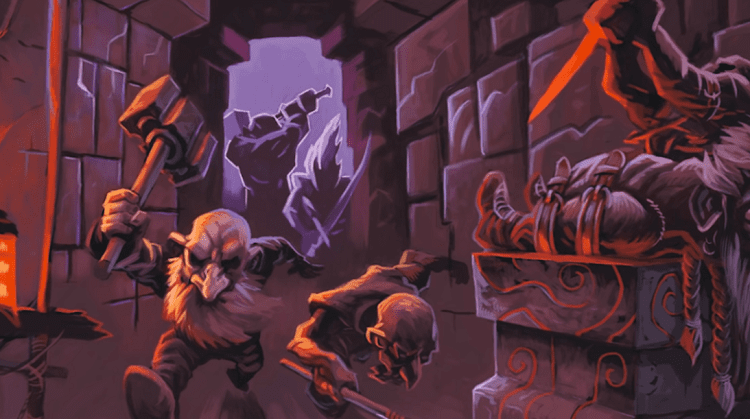
Duergar merchants aren’t stupid. They aren’t going to carry around all that treasure unless they have some strong arms to back them up. The greater the treasure, the greater the bodyguards.
These bodyguards, especially as they go up in level, are not going to be mindless-muscle. They will have their own personalities and depending on how players recognize and role-play this, negotiations with merchant bosses could be made easier or more difficult.
While duergar merchants normally wouldn’t hire outside their race, there are exceptions. Merchants with connections to the priesthood, especially with an Asmodeus slant, could have access to devils, tieflings, and other planar outsiders.
Agents
As xenophobic as the duergar are, their invisible hand plays an active role in the politics of the other races, both within the Underdark and on the surface. Their agents could be spies, diplomats, and assassins, or warriors, clerics, and other spell-casters.
Such an agent, or the agent’s puppet master, could provide a formidable adversary for the players, maybe even a Big Bad. Alternatively, the agent could represent a rival faction that the players, with skillful role-playing, can pit off against the Big Bad and other enemies.
When captured and properly interrogated, these agents can prove a valuable source of information. But be warned, a race that had been thralls of the mind-flayers for thousands of years could have their own methods of resisting interrogation and mind-probes.
Outcasts
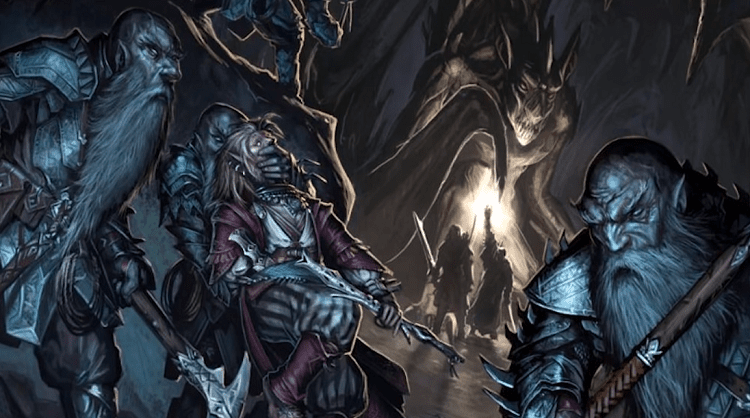
Outcasts like Dwalin the Duergar Sorcerer are not as rare as one might think. Duergar society is tyrannical with little tolerance for deviation. Many couldn’t measure up if they want to.
Thanks to the mind-flayers, duergar society is a psychologically and psionically damaged race. Most duergar somehow manage to function despite the damage; some don’t.
The rituals for their priesthood are also brutal and many don’t survive. Many of those who do survive are still mentally and physically broken. A society with such unforgiving standards is bound to have misfits that fall by the wayside and exile is the perfect solution.
Why not execution?
While execution is always an option, if it’s not necessary, they don’t bother. Execution would show that they care. The duergar are not Lolth-worshipping drow fanatics who send assassins to the surface to hunt down every member of their race who turns good and becomes a ranger! The duergar are too damaged to care about much of anything.
It’s possible that their own gods are dead and their priests don’t seem to care much. Laduguer, Duerra, Asmodeus… It’s all the same to them as long as they get their spells.
FAQs
Question: Can Non-duergar Visit Duergar Cities?
Answer: Trade with merchants from other cultures is part of duergar society. Foreigners are required to get proper written authorization, which can be acquired on the black market for about 200 gold pieces per person. Drow and kuo-toa merchants within duergar cities are a common sight.
There is a sizable minority of non-duergar inhabitants including:
• Derro
• Durzagon
• Orogs
• Stone giants
They also have symbiotic partnerships with red dragons and earth elementals. Other creatures/animals they make use of include:
• Bats
• Spiders
• Osquips
• Spitting crawlers
• Steeders (large lizards)
In The City of Blades, one-third of its population consists of slaves from the following races:
• Goblins
• Shield dwarves (mountain dwarves)
• Orcs
• Deep gnomes
• Humans
Question: Would Duergar Take Captured Adventurers as Prisoners and Slaves?
Answer: Yes. The duergar are pragmatic and usually don’t kill for sport. They accept nearly all prisoners, including dwarves, as slaves. Some slaves, however, may be sacrificed to gods and devils, and there’s always a local dragon in need of a snack.
Question: Are Duergar Psionic?
Answer: They should be. RAW (rules as written), there is no mention of duergar psionic abilities, other than their innate magic, in their description as monsters in 5e or player characters in SCAG. DMs might choose to homebrew some options.
It should be noted, however, that the duergar chose a different path than the githyanki. While the githyanki hated their former mind-flayer masters, they chose to embrace the power that came with their past association with this race of psionic masters. Their stats reflect that.
The duergar, however, chose a path of escapism, pessimism, and depression. Rather than revel in psionics, they resist. That’s reflected in their magic resistance and, if I’m the DM, I would homebrew some psionics resistance as well.
Question: Do Duergar have Stealth?
Answer: RAW, no more than anyone else, except for Invisibility. The implication, however, is that their gray skin helps them blend in with their Underdark surroundings and that they are capable of crafting stealth items like Boots of Elvenkind (in this case, Duergarkind).
Question: What are the Best Duergar-crafted Magic Items?
Answer: As a post-mind-flayer society, the duergar have crafted many items to resist mind-tampering. They craft plenty of serviceable weapons and armor, including +1, +2, etc., especially tool-weapons like hammers, axes, and picks. The duergar sell:
• Military saddles for Underdark riding lizards and pack lizards
• Thunderstones
• Poisons
• Armor lubricant
Uniquely duergar military equipment includes:
• Absorbing Shields
• Bolts of Battering
• Stonereaver axes
Conclusion
The duergar may have beards and mustaches, but they are not mustache-twirling villains. They may be evil, but one has to feel some sympathy for them. That’s what makes them well-developed player characters and NPCs.
Whenever these characters are played it has to be within the context of being victims of abuse, both individually and on a racial memory level. Like many victims of abuse in the real world, the duergar live in a constant state of depression. It’s as if their libido has been removed.
In their own minds, the duergar are heroic anti-heroes that have stood up to mind-flayers, drow, and the Dwarven Empire and are still standing. They may be cruel, but they have their own value system, especially amongst each other.
How the players respond to such complicated characters can make some exciting role-playing. They can judge the duergar or see them as a noble enemy. They can even attempt something extraordinary.
They can try the impossible and attempt to make peace between duergar and dwarves and heal millennia-old wounds. That would be a unique and very challenging campaign unto itself. Imagine, a peace-oriented Dungeons & Dragons campaign!
- Perform Bewitching 5e Guide - October 1, 2022
- Inspiring Leader 5e Guide - September 20, 2022
- Scrying 5e Guide - September 19, 2022

